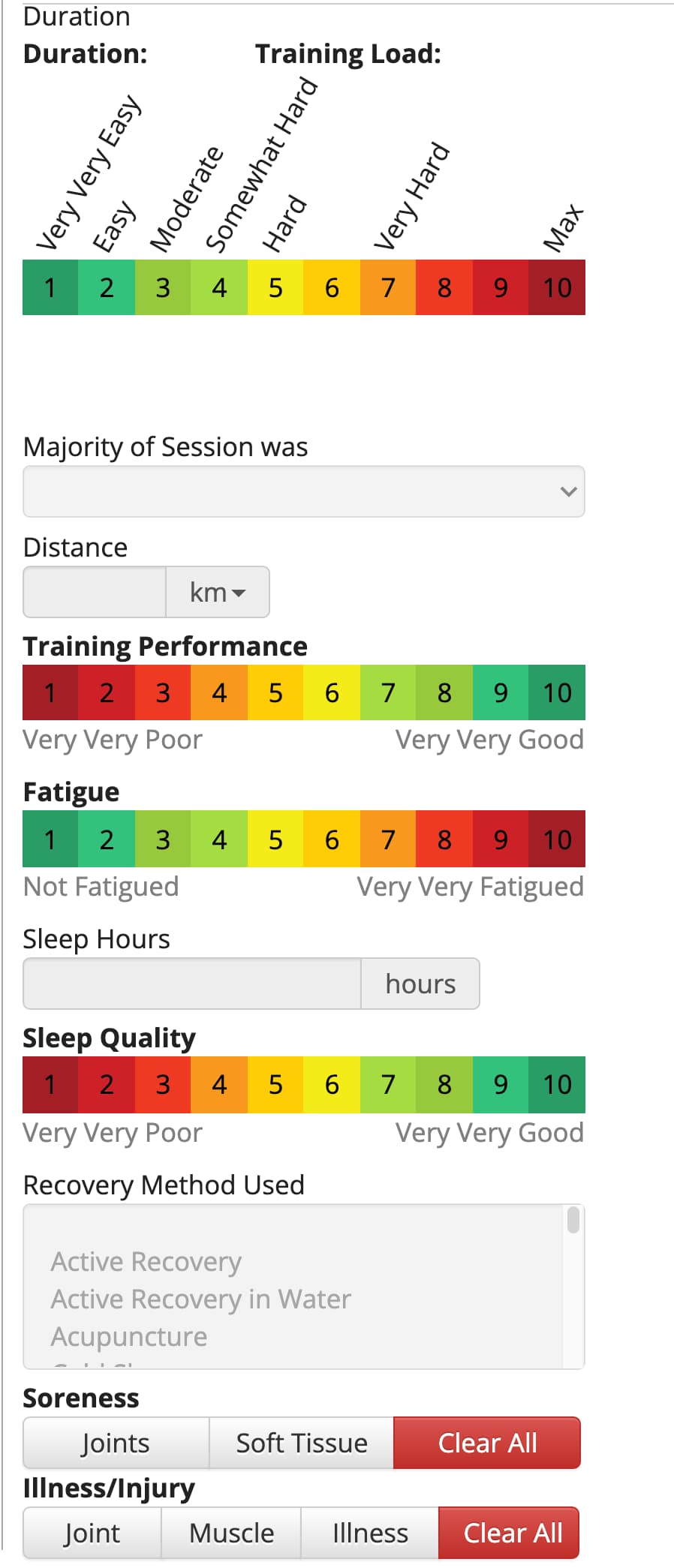How To Track Your Tennis Training
Nov 09, 2021
Today I want to talk to you about something extremely important if you are a player that wants to get as much out of themselves and their game as possible, so if you’re a tennis fluffer and not serious about pushing yourself and learning, then give this blog a miss, simply due to the fact I don’t want to waste your time.
What I am going to share with you is a tool that needs to be applied regularly in order for it to work….
This may be something that you have heard of before, you may have even tried it, but possibly you’re not maximizing its potential.
So, what we are looking at today is what I call Bio Tracking, I consider it one of the most important tools as a tennis trainer.
WHAT IS IT? Good question! Bio tracking is when I get feedback (information) from players regarding their; sleep quality, energy, training intensity, injury, body state, mood, nutrition, hydration. The list could be much longer than this, but you get what I’m talking about. We want to know how they are feeling, the state the body is in, and what’s causing it to feel like that, whether they are feeling good and playing good or they are tired and busted on the court.
WHY? Why gather this information? The data we collect allows us to get a better understanding of the athlete, what their tolerance levels are like and how much they can be loaded and placed under stress, whether that be physical, emotional, or mental. Once we establish these tolerances we have a much better platform to plan and structure tennis training, tournaments, and rest. It allows us to come up with the right formula for each individual. One of the most important aspects as a parent, coach, or tennis trainer is that we can easily open up a conversation with a player when we have this information. We can build on relationships shaped around the data we collect and use it to help the player know we understand them and that collectively we are working towards making them better. It helps build trust and confidence in the process.
I hope that makes sense?
Tracking your Tennis Training
HOW DO YOU DO IT?
You need to have access to or create your own “Wellness Diary”
We use a few different ways of setting this up, depending on the age and level of the player. I am going to share with you the most basic system today, but you should know that more advanced/full-time players will need a more detailed process that they should be completing daily.
Let’s take a 14-year player, playing at state level. They practice 3-5 times per week and do tennis strength and conditioning 2-3 times per week. What I would recommend in this situation is using a basic scaling system, monitoring 5 areas. This should be completed every day they are completing their tennis training, tennis practice, or a match.
Here is a step-by-step guide on how to set it up.
- Scaling system. Keep this simple. Using a scale of 1-10 I have found works best. Asking the players to rate themselves using the scale on how they are feeling or their performance etc. It may take a bit of practice and guidance to get this right and it is important players understand how to use the scale effectively otherwise we get inaccurate results. You will see from the example below it is easy to guide them through this using a detailed scale. If you are not getting trained by someone like us who uses these tools and can provide you with what you need, you will have to create your own spreadsheet or simply get players to write their results down in a journal. As long as everyone has access to it. If you need help in this area get in touch here
- What to measure. For the player in the scenario, I mentioned above, I would typically want to get information on these key areas; sleep quality, general energy levels, training performance, nutrition/hydration, injuries/illness. Getting data on these key areas will give you enough of an idea of how a player is tracking and whether changes need to be made.
- Using the information. It is good to review the data every week and find any areas of concern or ways you can improve the system you are using and after a 4 week period, I would look back and see if there are any patterns or major issues occurring. An example of this could be if a players sleep patterns are up and down, they may be scoring a high sleep quality for one week and really low sleep quality the alternate week, this will affect training and performance in a big way and finding the cause of this pattern is important for the long term development and health of the player. You should also use the information to help the player learn about themselves, an example of this could be after a practice session a player scores themselves a low score of say 4/10 for their training performance, upon asking them why it was so low they may say I felt sick in the stomach, then you realize their nutrition score is 3/10 because they had lollies and a pack of crisps before walking the court. It opens the door for an education lesson on how to eat better and feel better on the court.
Here is an example of a Wellness Diary. This process should take no longer than 2min to complete otherwise players won’t be consistent with it and the best time to get it done is straight after the last tennis workout, practice session, or match of the day.

If you are a player, parent of a player, or coach who feels like they need more structure and guidance on how to best create the ideal training plan and player management system, please reach out. We are currently working on a big project to help players learn (for a lifetime) how to comprehensively prepare, play and recover for tennis. If that’s you, get in touch and we will get some information to you. If you are someone who is confused about how to pull practice, tennis training, recovery, schooling, etc together, then it’s for you. Contact Us Here
In the meantime, don’t forget to get your butt into gear and grab an Online Tennis Fitness Program.
See you soon!


